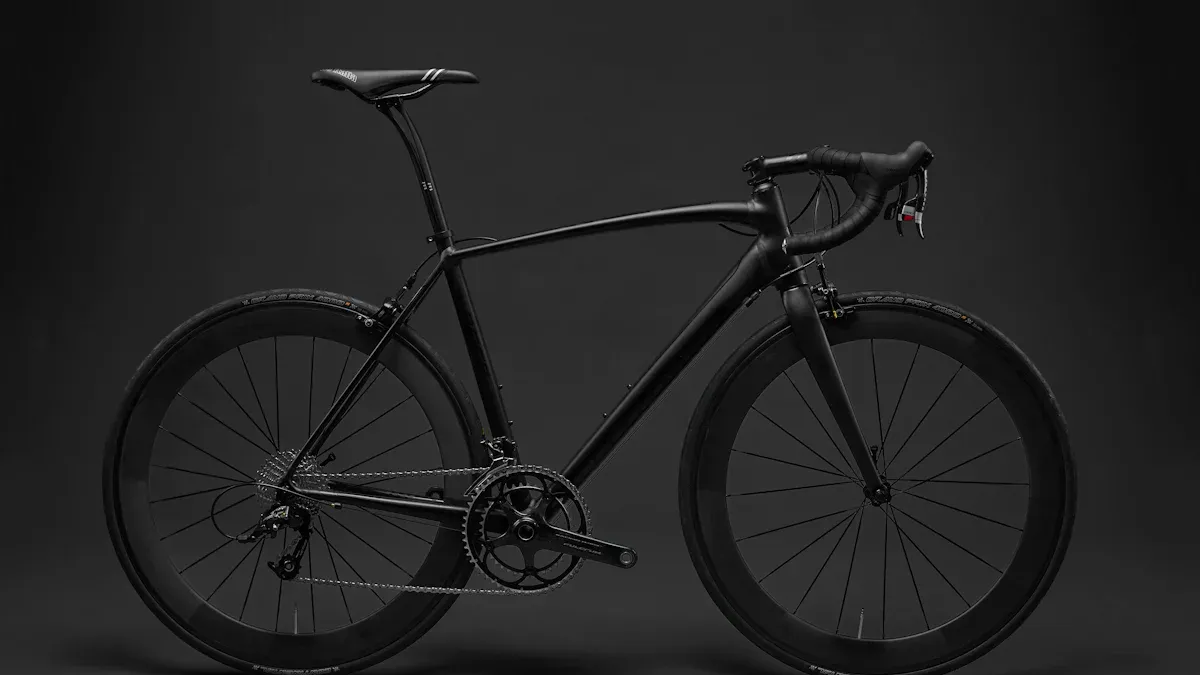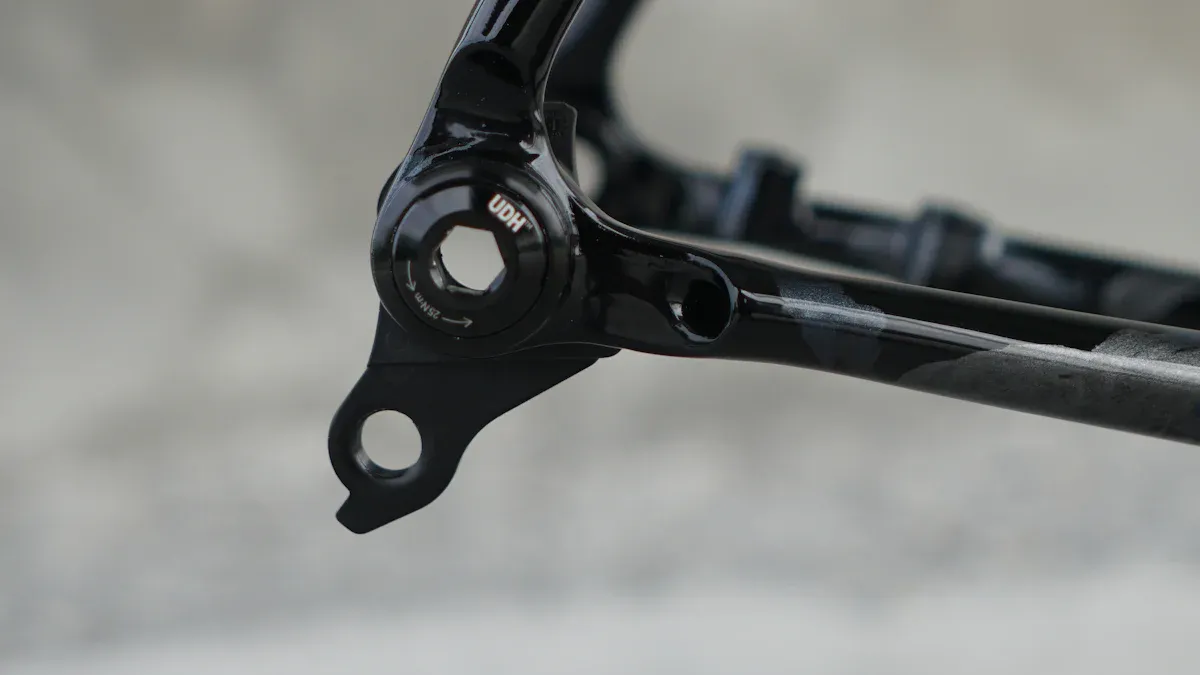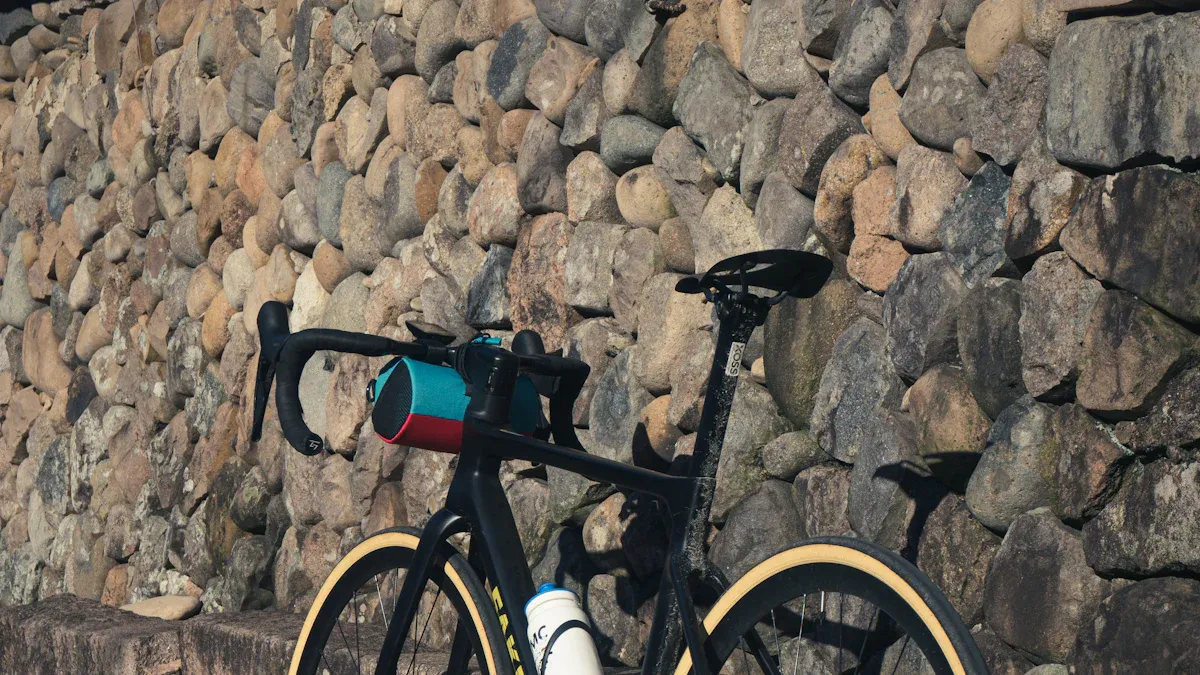
Testing carbon bike frame testing is very important for your safety and performance. Carbon frames are light and strong, but they can get damaged. They can suffer from scratches and hits. These damages can cause serious problems, especially after crashes. As you use these frames, they become less stiff. This makes handling harder and raises worries for cyclists. You should learn about the newest carbon bike frame testing methods to keep your bike reliable.
Key Takeaways
Nondestructive testing methods, like ultrasonic testing and active infrared thermography, keep carbon bike frames safe and reliable without causing damage.
Ultrasonic thickness gauges check the inside of carbon frames accurately. They help find defects that could make them unsafe.
Cycle inspect tools improve quality control in bike making. They ensure regular inspections and lower possible problems in carbon bike frames.
Load testing systems and environmental simulations check how carbon bike frames deal with stress. This makes sure they stay strong and safe while cycling.
Real-time monitoring systems let cyclists watch their bike’s performance all the time. This helps find problems early and keeps them safe.
Nondestructive Testing Methods

Nondestructive testing (NDT) methods are very important for checking carbon fiber bicycle frames. These methods let you look at frames without hurting them. Two of the best NDT methods are ultrasonic testing and active infrared thermography.
Ultrasonic Testing
Ultrasonic testing uses high-frequency sound waves to find problems in carbon fiber. It is like sending sound waves through the material. These waves bounce back differently based on the material and any issues. Technicians study these reflections to find internal problems like delaminations, voids, and cracks.
Advantages of Ultrasonic Testing:
Very accurate in finding defects.
Gives instant results for quick checks.
Limitations:
Hard to reach complex shapes.
Not as good for surface defects.
Research shows that ultrasonic testing is great at finding internal flaws in carbon fiber. It can find structural cracks and delaminations, keeping your bike frame safe and reliable.
Active Infrared Thermography
Active infrared thermography is another top nondestructive testing method for carbon bike frames. This method uses a quick burst of infrared heat on the frame. A fast thermal imaging camera then captures how the material reacts to the heat. This lets you see detailed heatmaps that show the condition of joints and bonding in the carbon fiber.
Key Features of Active Infrared Thermography:
Speed: Inspections take just seconds.
Effectiveness: It finds impact damage and subsurface issues well.
Equipment: Needs only an infrared camera and a heat source.
This method’s quick checks make it very useful for safety-minded cyclists. Studies show that active infrared thermography can find delaminations and cracks, making sure your bike frame is in great shape.
Method | Advantages | Limitations |
|---|---|---|
Infrared Thermography | Not as good for deeper defects | |
Ultrasonic Testing | Very accurate, instant results | Hard to reach complex shapes, less accurate for surface defects |
Both ultrasonic testing and active infrared thermography are key for keeping carbon bike frames safe and performing well. By using these nondestructive evaluation methods, you can ride confidently knowing your bike frame has been thoroughly tested.
Carbon Bike Frame Testing Technologies

In 2025, the cycling world has started using new technologies for testing carbon bike frames. These new tools help keep cyclists safe and improve performance. Cyclists can trust their bikes more. Two important technologies are ultrasonic thickness gauges and cycle inspect tools.
Ultrasonic Thickness Gauges
Ultrasonic thickness gauges are very important for checking carbon bike frames. These tools use sound waves to find problems inside the frame without causing any damage. Here are some key features of ultrasonic thickness gauges:
Feature | Description |
|---|---|
Model | |
Measurement Technique | Uses sound waves and damage mapping to find internal problems. |
Operational Principle | Measures how long it takes for a sound pulse to go through the material. |
Application | Good for checking carbon fiber in bike frames. |
Structural Integrity Assessment | Can find unusual patterns in composite materials, showing if they are strong. |
Nondestructive Testing | Lets you check without cutting the frame, keeping the bike safe. |
Reinforcement Capability | Can make a bike frame about 10% stronger than before. |
Quality Control | Used after repairs to check the bike frame’s safety and quality. |
These gauges give accurate readings of the inside of carbon bike frames. They can find empty spaces and defects that other methods might miss. For example, many bike shops use the ‘tap’ method to find cracks, but this is not as good as ultrasonic testing. Ultrasonic gauges give a clearer picture, helping to find problems better. They can even show how damage might spread, giving a full view of the frame’s strength.
Cycle Inspect Tools
Cycle inspect tools have changed how quality control works in cycling. These tools make sure carbon bike frames are safe. Here are some main features of cycle inspect tools:
Access to special NDT tools and training for carbon checks.
Training for bike shops and mechanics.
Use of ultrasound tools to check the frame’s strength.
Damage assessment tool that uses algorithms for quick checks.
Standard inspection steps to keep things consistent and reduce mistakes.
Training that includes both theory and practice, with online options.
Inspection reports for crash damage and used bike checks.
Regular inspections to catch problems early and keep bikes safe.
These tools help improve quality control by reducing problems in bike rims and making products better. They use smart methods like Pareto charts and Fishbone diagrams to find and fix issues. By using cycle inspect tools, companies show they care about being innovative and excellent.
Using these technologies in carbon bike frame testing makes the frames more reliable and improves the cycling experience. With accurate measurements and careful checks, you can ride with confidence, knowing your bike frame has been thoroughly tested.
Structural Analysis Techniques
Testing carbon bike frames uses structural analysis techniques. These methods help you see how well your bike can handle stress. Two important techniques are load testing systems and environmental simulation.
Load Testing Systems
Load testing systems check how carbon bike frames react to different forces. These tests mimic real-life situations to ensure safety and strength. Here are some common load testing methods:
Test Method | Description |
|---|---|
Fatigue Tests | Check the frame’s ability to handle repeated stress. |
Impact Tests | See how the frame withstands sudden forces. |
Static Bending Test | Test how the frame resists bending forces. |
Rearward Impact Test | Check the frame’s strength against rear impacts. |
These tests give important information about the frame’s strength. For example, static testing shows if the frame bends under heavy loads. This helps keep your frame strong and safe while riding. Dynamic testing mimics cycling conditions. It helps predict how long the frame will last and suggests design changes.
Environmental Simulation
Environmental simulation techniques test carbon bike frames in tough conditions. These methods copy real-life situations that cyclists face. For example, Trek Bicycles uses True-Load and Abaqus simulation tools. They analyze loads during hard riding and collect strain data during peak events. This helps them improve their simulation models.
These simulations show how loads from professional riders can be more than normal use. This leads to specific design changes that make performance better. By using these testing methods, manufacturers can make bike frames stronger.
Data Analysis in Frame Testing
Data analysis is very important for testing carbon bike frames. It helps you learn about how well your bike frame works, lasts, and keeps you safe. By looking at testing data, makers can see how design and building methods change frame performance. Key numbers like elastic modulus and tensile strength are important for checking frame quality and stiffness.
Predictive Analytics
Predictive analytics uses data to guess how carbon bike frames will act in different situations. Automated Machine Learning (AutoML) methods are now popular in this area. A study shows that AutoML does much better than older models. It uses a dataset of 4,500 bicycle frames and gets a 24% better F1 score for classification tasks. Also, it lowers the mean absolute error for regression tasks by 12.5%. This means you can trust predictions about your bike’s strength and performance more than ever.
Real-time Monitoring Systems
Real-time monitoring systems improve data collection and analysis for carbon bike frame testing. They give useful information about your bike’s performance while you ride. Here are some benefits of these systems:
Benefit/Feature | Description |
|---|---|
The system collects a lot of data on different factors that are important for tracking performance and safety. | |
Real-Time Monitoring | It gives real-time data on location, rider control data, and other custom sensor inputs. |
Scalability and Modularity | The system can grow for different fleet sizes and is modular, allowing for extra sensors to be added. |
Open Source and Replicable | The design is open source, making it easy to copy for more research and development. |
Networked Fleet | It connects single e-bikes into a networked fleet, showing the internet of things in cycling. |
These systems let you check your bike’s condition all the time. They help find impact damage and other problems before they get serious. By using real-time data, you can make smart choices about maintenance and repairs, keeping your bike safe and reliable.
In 2025, new technologies for testing carbon bike frames have changed the cycling world. These new ideas help with performance, customization, and being eco-friendly. You will see better strength-to-weight ratios and improved aerodynamic efficiency, making your ride better.
Briggs points out that we need standard inspection methods to improve safety.
Phil White wants a common test for steerer tubes to fix current testing issues.
Joe Fourie says that knowing about materials can help you as a cyclist.
Aspect | Description |
|---|---|
Performance | New ideas make strength-to-weight ratios and aerodynamic efficiency better, improving your ride. |
Customization | Future changes will let you customize frames to fit your needs, making it more comfortable and effective. |
Sustainability | The move towards eco-friendly production matches your desire for products that are good for the environment. |
These changes promise a safer and more fun cycling experience for you and future riders.
FAQ
What are the main benefits of nondestructive testing for carbon bike frames?
Nondestructive testing helps find problems inside the frame without breaking it. This keeps your bike safe and strong.
How often should I have my carbon bike frame tested?
You should test your carbon bike frame at least once a year. If you ride a lot or have crashes, check it more often to stay safe.
Can I perform any tests on my carbon bike frame at home?
You can look at your frame for cracks or damage. But for better results, use professional tests like ultrasonic testing or infrared thermography.
What should I do if my carbon bike frame fails a test?
If your frame fails a test, stop using it right away. Talk to a professional about repairs or getting a new one to stay safe while riding.
How do new technologies improve carbon bike frame testing?
New technologies make testing more accurate and faster. They give detailed information about the frame’s strength, helping makers build safer bikes for riders like you.
See Also
Innovative Developments in Electric Bike Frames for 2025
Discovering the Tech That Powers Carbon Fiber Frames
Reasons Cyclists Prefer Carbon Frames Over Others in 2025
The Role of Science in Carbon Frame Repairs
Understanding the Science of Compliance in Mountain Bike Frames
